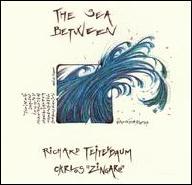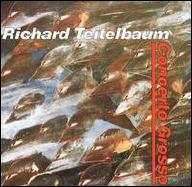Teitelbaum was born on May 19, 1939, in New York. His formal studies earned him a B.A. (1960) from the Haverford College in Pennsylvania, and a master's (1964) from Yale University, where he studied theory with Allen Forte and composition with Mel Powell. His student compositions include The Rose for voice and piano (1963) and Music for Flute Alone (1963). Spending time in Italy for two years on a Fulbright scholarship, he wrote the Concerto da Camera, for 14 instruments and Tutto e Perdutto, for voice and instruments, both in 1965. At this time, he also brought the first Moog synthesizer to Europe and performed over 200 concerts on the instrument. In Rome in 1966, he helped create Musica Elettronica Viva, a pioneering live electronic music group that included composer-performers Frederic Rzewski and Alvin Curran. Among his compositions at that time were In Tune (1967), for amplified brainwaves, heartbeats, breath, and Moog synthesizer (other composers using amplified brainwaves to trigger sounds in the 1960s include Alvin Lucier and David Rosenboom), and La Mattina Presto (1970-1971), for magnetic tape.
In the 1970s, Teitelbaum experimented with new electronic possibilities and began to work with world music ensembles in such pieces as Tai Chi Alpha Tala (1974), for Tai Chi performer, biomedical telemetry system, synthesizer, mrdangam, and video synthesizer; Behemoth Dreams (1976), for contrabass clarinet and synthesizers (with Anthony Braxton); and the exquisite Blends (1977), for shakuhachi (Katsuya Yokoyama), tabla, and other percussion (Trilok Gurtu), and synthesizers, with a score written in different notations based on Japanese, Indian, and American practices.
In the 1980s, he continued his world music involvement (including a foray into Jewish mythology in the Golem series) and experimented with automated pianos and interactive electronics. These pieces include Mirror on the Wall (1980), environmental music for tape and outdoor Muzak system; BLT (1981) for synthesizers and computers (with David Behrman and George Lewis); Reverse Polish Notation (1983), for a digital piano system; Digital Music and Jazz Live (1984), for synthesizers and winds (with Braxton); Iro wa nioedo (1986), a choral work for 20 Japanese Shingon Buddhist monks; Golem (1989-1994), an interactive opera, for voices, acoustic instruments, robotic pianos, and interactive video system (also Golem Sketches, Golem I, Golem Studies, Golemics); and the Concerto Grosso No. 2 (1988), for piano, robotic piano, trombone, synthesizers, and interactive computer systems (with Robert Rowe).
In the 1990s, Teitelbaum further refined these ensemble and electronic interests in works such as Intera (1992), for yokobue (Japanese bamboo flute), Western reeds, and interactive computer music system; and Seq Transit Parammers (1998), for two Disklaviers and interactive computer system. He also created numerous multimedia works with artists Nam June Paik, Joan Jonas, and others.
Teitelbaum taught composition and electronic music at Bard College, where he was also Director of the Electronic Music Studio and received numerous awards. Teitelbaum died on April 16, 2020, following a stroke. ~ "Blue" Gene Tyranny, Rovi
















